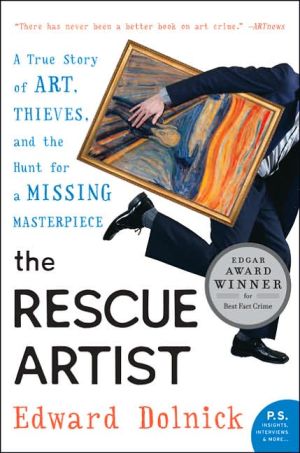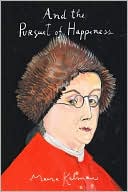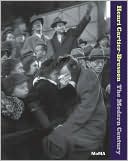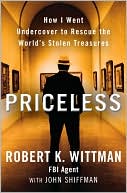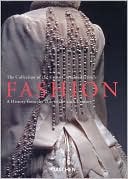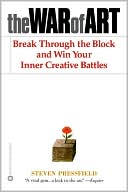Rescue Artist: A True Story of Art, Thieves, and the Hunt for a Missing Masterpiece
In the predawn hours of a gloomy February day in 1994, two thieves entered the National Gallery in Oslo and made off with one of the world's most famous paintings, Edvard Munch's Scream. It was a brazen crime committed while the whole world was watching the opening ceremonies of the Winter Olympics in Lillehammer. Baffled and humiliated, the Norwegian police turned to the one man they believed could help: a half English, half American undercover cop named Charley Hill, the world's greatest...
Search in google:
Dolnick's account of the 1994 theft of Edvard Munch's The Scream is populated with characters much stranger than fiction: Lord Bath, an aristocrat fond of velvet jackets, David Duddin, a fence who once tried to sell a stolen Rembrandt, Charley Hill, a world-famous detective, and Munch himself. Dolnick focuses on the 1994 theft but along the way visits other art thefts and recoveries. Annotation ©2005 Book News, Inc., Portland, ORPublishers WeeklyThe little-known world of art theft is compellingly portrayed in Dolnick's account of the 1994 theft and recovery of Edvard Munch's iconic painting The Scream. The theft was carried out with almost comical ease at Norway's National Gallery in Oslo on the very morning that the Winter Olympics began in that city. Despite the low-tech nature of the crime, the local police were baffled, and Dolnick (Down the Great Unknown; Madness on the Couch) makes a convincing case that the fortunate resolution of the investigation was almost exclusively due to the expertise, ingenuity and daring of the "rescue artist" of the title: Charley Hill, a Scotland Yard undercover officer and former Fulbright scholar who has made recovering stolen art treasures his life's work. Hill is a larger-than-life figure who seems lifted from the pages of Elmore Leonard, although his adversaries in this inquiry are fairly pedestrian. While the path to the painting's retrieval is relatively straightforward once some shady characters put the word out that they can get their hands on it, the narrative's frequent detours to other crimes and engaging escapades from Hill's past elevate this work above last year's similar The Irish Game by Matthew Hart. 16 pages of b&w and 8 pages of color photos not seen by PW. Agent, Rafe Sagalyn. (July 1) Copyright 2005 Reed Business Information.
The Rescue Artist\ A True Story of Art, Thieves, and the Hunt for a Missing Masterpiece \ \ By Edward Dolnick \ HarperCollins Publishers, Inc.\ Copyright © 2005 Edward Dolnick\ All right reserved.\ ISBN: 0060531177 \ \ \ Chapter One\ Break-in\ Oslo, Norway\ February 12, 1994\ 6:29 A.M.\ In the predawn gloom of a Norwegian winter morning, two men in a stolen car pulled to a halt in front of the National Gallery, Norway's preeminent art museum. They left the engine running and raced across the snow. Behind the bushes along the museum's front wall they found the ladder they had stashed away earlier that night. Silently, they leaned the ladder against the wall.\ A guard inside the museum, his rounds finished, basked in the warmth of the basement security room. He had paperwork to take care of, which was a bore, but at least he was done patrolling the museum, inside and out, on a night when the temperature had fallen to fifteen degrees. He had taken the job only seven weeks before.\ The guard took up his stack of memos grudgingly, like a student turning to his homework. In front of his desk stood a bank of eighteen closedcircuit television monitors. One screen suddenly flickered with life. The black-and-white picture was shadowy -- the sun would not rise for another ninety minutes -- but the essentials were clear enough. A man bundled in a parka stood at the foot of a ladder, holding it steady in his gloved hands. His companion had already begun to climb. The guard struggled through his paperwork, oblivious to the television monitors.\ The top of the ladder rested on a sill just beneath a tall window on the second floor of the museum. Behind that window was an exhibit celebrating the work of Norway's greatest artist, Edvard Munch. Fifty-six of Munch's paintings lined the walls. Fifty-five of them would be unfamiliar to anyone but an art student. One was known around the world, an icon as instantly recognizable as the Mona Lisa or van Gogh's Starry Night. In poster form, it hung in countless dorm rooms and office cubicles; it featured endlessly in cartoons and on T-shirts and greeting cards. This was The Scream.\ The man on the ladder made it to within a rung or two of the top, lost his balance, and crashed to the ground. He staggered to his feet and stumbled back toward the ladder. The guard sat in his basement bunker unaware of the commotion outside. This time the intruder made it up the ladder. He smashed the window with a hammer, knocked a few stubborn shards of glass out of the way, and climbed into the museum. An alarm sounded. In his bunker, the guard cursed the false alarm. He walked past the array of television screens without noticing the lone monitor that showed the thieves, stepped over to the control panel, and set the alarm back to zero.\ The thief turned to The Scream -- it hung only a yard from the window -- and snipped the wire that held it to the wall. The Scream, at roughly two feet by three feet, was big and bulky. With an ornate frame and sheets of protective glass both front and back, it was heavy, too -- a difficult load to carry out a window and down a slippery metal ladder. The thief leaned out the window as far as he could and placed the painting on the ladder. "Catch!" he whispered, and then, like a parent sending his toddler down a steep hill on a sled, he let go.\ His companion on the ground, straining upward, caught the sliding painting. The two men ran to their car, tucked their precious cargo into the back seat, and roared off. Elapsed time inside the museum: fifty seconds. In less than a minute the thieves had gained possession of a painting valued at $72 million.\ It had been absurdly easy. "Organized crime, Norwegian style," a Scotland Yard detective would later marvel. "Two men and a ladder!"\ * * *\ At 6:37 a.m. a gust of wind whipped into the dark museum and set the curtains at the broken window dancing. A motion detector triggered a second alarm. This time the guard, 24-year-old Geir Berntsen, decided that something was wrong. Panicky and befuddled, he thrashed about trying to sort out what to do. Check things out himself? Call the police? Berntsen still had not noticed the crucial television monitor, which now displayed a ladder standing unattended against the museum's front wall. Nor had he realized that the alarm had come from room 10, where The Scream hung.\ Berntsen phoned his supervisor, who was at home in bed and halfasleep, and blurted out his incoherent story. In midtale, yet another alarm sounded. It was 6:46 a.m. Fully awake now, Berntsen's supervisor hollered at him to call the police and check the monitors. At almost precisely the same moment, a police car making a routine patrol through Oslo's empty streets happened to draw near the National Gallery. A glance told the tale: a dark night, a ladder, a shattered window.\ The police car skidded to a stop. One cop radioed in the break-in, and two others ran toward the museum. The first man to the ladder scrambled his way to the top, and then, like his thief counterpart a few minutes before, slipped and fell off.\ Back to the radio. The police needed another patrol car, to bring their colleague to the emergency room. Then they ran into the museum, this time by way of the stairs.\ The policemen hurried to the room with the ladder on the sill. A frigid breeze flowed in through the broken window. The walls of the dark room were lined with paintings, but there was a blank spot next to the high window on University Street. The police ducked the billowing curtains and stepped over the broken glass. A pair of wire cutters lay on the floor. Someone had left a postcard.\ \ Continues... \ \ \ \ Excerpted from The Rescue Artist by Edward Dolnick Copyright © 2005 by Edward Dolnick. Excerpted by permission.\ All rights reserved. No part of this excerpt may be reproduced or reprinted without permission in writing from the publisher.\ Excerpts are provided by Dial-A-Book Inc. solely for the personal use of visitors to this web site. \ \
\ From Barnes & NobleIn 1994, two no-nonsense thieves climbed a ladder, smashed through a window of Norway's National Art Museum in Oslo, and cut a painting from the wall with wire cutters. The entire operation took only 50 seconds, but this crude heist made headlines throughout the world because the artwork was Edvard Munch's The Scream, one of the most valuable paintings on earth. If the theft of the masterpiece lacked complexity and drama, the recovery operation had all of the twists and intensity of a first-class thriller. Edward Dolnick's The Rescue Artist recounts the story of a sting operation that will leave you reeling.\ \ \ \ \ Mary Roach"The Rescue Artist is a masterpiece. Engrossing, entertaining, often surreally hilarious."\ \ \ Milton Esterow"There has never been a better book on art crime."\ \ \ \ \ Time Magazine"An entertaining account of the eternal struggle between high art and low cunning."\ \ \ \ \ Donald Harington"Dolnick...writes with a crisp, breezy style that runs with the speed of thieves purloining stolen canvases."\ \ \ \ \ Geoffrey Jennings"A big shout-out to Edward Dolnick for The Rescue Artist."\ \ \ \ \ ArtNews"There has never been a better book on art crime."\ \ \ \ \ Los Angeles Times"Riveting...fascinating."\ \ \ \ \ Time magazine“An entertaining account of the eternal struggle between high art and low cunning.”\ \ \ \ \ Los Angeles Times“Riveting...fascinating.”\ \ \ \ \ ArtNews“There has never been a better book on art crime.”\ \ \ \ \ Publishers WeeklyThe little-known world of art theft is compellingly portrayed in Dolnick's account of the 1994 theft and recovery of Edvard Munch's iconic painting The Scream. The theft was carried out with almost comical ease at Norway's National Gallery in Oslo on the very morning that the Winter Olympics began in that city. Despite the low-tech nature of the crime, the local police were baffled, and Dolnick (Down the Great Unknown; Madness on the Couch) makes a convincing case that the fortunate resolution of the investigation was almost exclusively due to the expertise, ingenuity and daring of the "rescue artist" of the title: Charley Hill, a Scotland Yard undercover officer and former Fulbright scholar who has made recovering stolen art treasures his life's work. Hill is a larger-than-life figure who seems lifted from the pages of Elmore Leonard, although his adversaries in this inquiry are fairly pedestrian. While the path to the painting's retrieval is relatively straightforward once some shady characters put the word out that they can get their hands on it, the narrative's frequent detours to other crimes and engaging escapades from Hill's past elevate this work above last year's similar The Irish Game by Matthew Hart. 16 pages of b&w and 8 pages of color photos not seen by PW. Agent, Rafe Sagalyn. (July 1) Copyright 2005 Reed Business Information.\ \ \ \ \ School Library JournalAdult/High School-A compelling account of the 1994 theft of one of the world's most famous paintings, The Scream. Dolnick focuses on the hero of the case, Scotland Yard's Art Squad specialist Charley Hill. Because of Hill's earlier success in retrieving stolen art treasures, he was charged with the difficult job of locating the painting and successfully retrieving it in its original condition. While the author keeps readers in suspense as he digresses frequently to tell the story of other notorious art thefts and art thieves, diligent readers will be treated to a nail-biting, edge-of-your-seat account of the painting's rescue. Along the way, Dolnick imparts a great deal of information not only about Edvard Munch, but also about the art world's surprisingly lax security measures and the lack of motivation on the part of authorities charged with retrieving art treasures. In spite of the asides, this is a tightly woven, fast-paced story. Teens interested in art and/or investigative journalism will enjoy this real-life whodunit.-Catherine Gilbride, Farifax County Public Library, VA Copyright 2005 Reed Business Information.\ \ \ \ \ Kirkus ReviewsThe theft of, search for and recovery of Edvard Munch's The Scream (the first time). Dolnick (Down the Great Unknown, 2001, etc.), former chief science writer for the Boston Globe, offers a treatise on art theft using as his take-off point the remarkably easy 1994 pilfering of Munch's masterpiece from Norway's National Gallery. The protagonist is an Anglo-American detective for Scotland Yard, Charlie Hill, a Brit of a certain independent type, with scant regard for petty regulations that get in the way of practicality. But Hill's genuine love of the art he pursues personalizes both his search and the book itself. The chase is something of a game for Hill, just as it is to a certain extent for the thieves. Dolnick's narrative, in fact, is frequently interrupted with digressions on famous art thieves, previous art thefts (particularly the 1990 job at Boston's Isabella Stewart Gardner Museum) and short vignettes, among them Charlie Hill's war stories from Vietnam. Readers will discover the ridiculousness of the popular image of a reclusive collector who has paid thieves to steal art for his own personal and private enjoyment. Thieves steal art not for any such reason as that but because it's valuable and relatively unguarded, even in museums. They steal art because it's there. The various digressions slow the pace a little as we wait for Dolnick to get back to the story of The Scream, which needs no embellishment in its extraordinary twists, screw-ups, coincidences, and quick thinking on the part of Hill and his team of experienced undercover cops. In the end, we're left with the impression that they recovered the painting in spite of the Norwegian police rather than because of them. Sadly,Dolnick makes it clear why another version of The Scream, and also Munch's Madonna, could be pinched from Oslo's Munch Museum so easily a year ago-and why both are still at large. Overall, a picaresque tale.\ \
